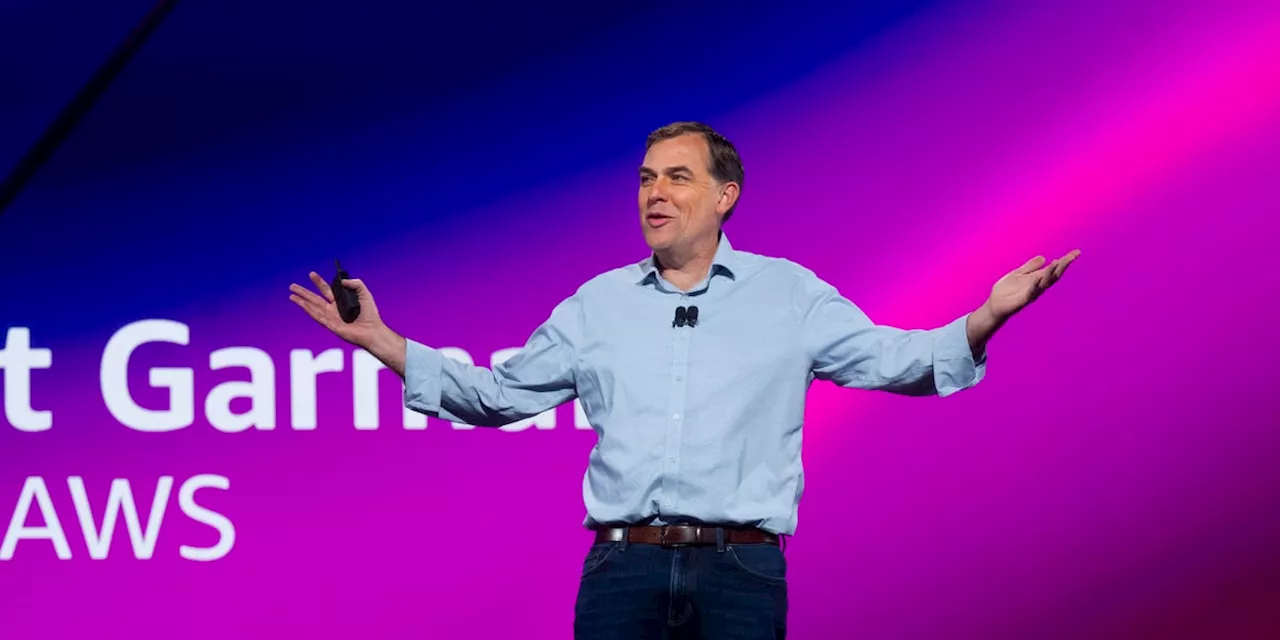AWS Lambda celebrates its tenth anniversary, marking a decade of revolutionizing cloud computing with its serverless architecture. While it has achieved significant success, serverless computing faces persistent limitations. This article explores Lambda's journey, its impact on the industry, its strengths and weaknesses, and its potential future in the context of evolving AI and cloud computing trends.
AWS Lambda celebrated its tenth anniversary in November 2024, marking a decade of transforming cloud computing through serverless architecture. By eliminating the need for infrastructure management, Lambda promised to streamline application development. Yet, despite its influence, serverless computing remains a complement rather than a replacement for traditional compute models.
When I first heard about AWS Lambda during re:Invent 2014, I expected it to become a parallel stream of compute, transforming into a viable alternative to virtual machines. Today, serverless computing runs only a fraction of the workloads deployed in the cloud. Lambda’s journey is one of breakthroughs, industry-wide adoption and persistent limitations that have shaped its trajectory.When AWS Lambda was launched, it introduced an event-driven execution model that allowed developers to run code in response to triggers without provisioning or maintaining servers. Early adopters, including fintech and gaming companies, leveraged its automatic scaling and pay-per-use pricing to reduce costs and improve efficiency. Over time, Lambda’s seamless integrations with other AWS services enabled new use cases in web applications, real-time data processing and IoT workloads. By 2020, major enterprises had adopted serverless frameworks, drawn to their ability to scale with demand. However, serverless never became the de facto compute model across industries, primarily due to inherent trade-offs that remain unresolved.Containers, such as those managed by Kubernetes, offered more flexibility in workload management, allowing developers to retain control over their runtime environments while still benefiting from automated scaling. Unlike Lambda, which imposes execution time limits and enforces a specific function-based architecture, containers support a broader range of applications, including those requiring persistent state, long-running processes and GPU acceleration. Many enterprises found that containers provided a middle ground between the hands-off nature of serverless and the control offered by traditional virtual machines, leading to an increased preference for container-based workloads in modern architectures.Lambda’s success spurred industry-wide adoption of serverless computing. Azure Functions and Google Cloud Functions emerged as direct competitors, with both services addressing some of Lambda’s gaps. Google, for instance, introduced Cloud Run to bridge the gap between serverless and containerized workloads, offering greater flexibility than AWS Lambda. Meanwhile, startups and third-party platforms like Knative and OpenFaaS further diversified the serverless landscape, making it a strong choice for event-driven applications. However, enterprises continue to balance Lambda with container-based approaches to retain operational control and mitigate costs.Lambda’s technical evolution has addressed some of its early limitations while exposing new challenges. The introduction of support for additional languages and runtimes, container-based execution and provisioned concurrency has helped mitigate issues like cold starts. Yet, several critical drawbacks persist: cold start latency remains a concern for latency-sensitive applications. Many developers turn to provisioned concurrency to address this, but doing so negates some of the cost benefits of serverless computing.Lambda’s 15-minute execution cap makes it impractical for long-running workloads, such as extensive data processing or machine learning inference. AI and ML workloads increasingly require GPU acceleration, which Lambda does not support natively. As a result, many organizations opt for alternatives such as AWS Fargate or GPU-enabled EC2 instances instead of Lambda for inference tasks. Google Cloud Run, one of Lambda’s key competitors, added GPU support, further blurring the lines between serverless and containerized solutions.As AI-driven applications gain momentum, AWS Lambda has the potential to evolve into a more suitable platform for Generative AI, Large Language Models, and agentic workflows. AWS can enhance Lambda by introducing GPU-backed execution environments, enabling efficient inference workloads for AI applications. Given the stateless nature of Lambda, AWS could also optimize integration with vector databases and caching mechanisms to allow AI agents to process and retrieve contextual data with lower latency. Additionally, introducing dedicated AI inference runtimes and optimizing cold start times for LLM workloads could make Lambda a viable option for real-time AI agents. By streamlining integration with AWS services like Bedrock and SageMaker, AWS can position Lambda as a key component in AI-driven, serverless architectures, balancing cost-efficiency with high-performance inference capabilities.Lambda’s advantage lies in its tight integration with the AWS ecosystem. However, this advantage comes at the cost of reduced portability. Migrating workloads to another cloud provider or an on-premises solution often requires significant re-architecture. This limitation could hinder Lambda’s adoption in scenarios requiring multi-cloud or hybrid strategies. While Lambda has proven its value in numerous domains, addressing these persistent challenges is crucial for its long-term success and wider adoption across diverse enterprise workloads
AWS Lambda Serverless Computing Cloud Computing Containerization AI Machine Learning Generative AI
United States Latest News, United States Headlines
Similar News:You can also read news stories similar to this one that we have collected from other news sources.
 AWS CEO Matt Garman on Cloud Computing, Generative AI, and the Jake Paul FightIn this episode of Decoder, Nilay Patel talks with Matt Garman, the CEO of Amazon Web Services (AWS). They discuss Garman's perspective on the future of cloud computing, how AWS is preparing for a world of generative AI, and the company's approach to investing in new technologies. The conversation also touches on a recent high-profile AWS customer, Netflix, and their experience streaming the Jake Paul vs. Mike Tyson fight.
AWS CEO Matt Garman on Cloud Computing, Generative AI, and the Jake Paul FightIn this episode of Decoder, Nilay Patel talks with Matt Garman, the CEO of Amazon Web Services (AWS). They discuss Garman's perspective on the future of cloud computing, how AWS is preparing for a world of generative AI, and the company's approach to investing in new technologies. The conversation also touches on a recent high-profile AWS customer, Netflix, and their experience streaming the Jake Paul vs. Mike Tyson fight.
Read more »
 AWS CEO Matt Garman on AI, Netflix, and the Future of Cloud ComputingThe Verge's Nilay Patel sits down with Matt Garman, the CEO of Amazon Web Services (AWS), to discuss his vision for the company's future, the impact of generative AI on cloud computing, and how AWS is preparing for the next generation of technology.
AWS CEO Matt Garman on AI, Netflix, and the Future of Cloud ComputingThe Verge's Nilay Patel sits down with Matt Garman, the CEO of Amazon Web Services (AWS), to discuss his vision for the company's future, the impact of generative AI on cloud computing, and how AWS is preparing for the next generation of technology.
Read more »
 Big AWS customers hound cloud giant for access to DeepSeek AI modelsBusiness Insider tells the global tech, finance, stock market, media, economy, lifestyle, real estate, AI and innovative stories you want to know.
Big AWS customers hound cloud giant for access to DeepSeek AI modelsBusiness Insider tells the global tech, finance, stock market, media, economy, lifestyle, real estate, AI and innovative stories you want to know.
Read more »
 Evan Rachel Wood Says Statute of Limitations Prevents Marilyn Manson ChargesEvan Rachel Wood responded to the news that Marilyn Manson won't face charges for sexual assault allegations made against him. The District Attorney's Office concluded that the alleged crimes fall outside of the statute of limitations. Wood expressed her disappointment but emphasized the importance of advocating for better laws, highlighting the passage of the Phoenix Act, which extends the statute of limitations for reporting domestic violence.
Evan Rachel Wood Says Statute of Limitations Prevents Marilyn Manson ChargesEvan Rachel Wood responded to the news that Marilyn Manson won't face charges for sexual assault allegations made against him. The District Attorney's Office concluded that the alleged crimes fall outside of the statute of limitations. Wood expressed her disappointment but emphasized the importance of advocating for better laws, highlighting the passage of the Phoenix Act, which extends the statute of limitations for reporting domestic violence.
Read more »
 Amazon's Cloud Computing Giant Hides Emissions Data in the AI BoomAmazon Web Services (AWS), a leading cloud computing platform, lacks transparency in its emissions reports, making it impossible to assess the environmental impact of its data centers, particularly those involved in AI model training. Despite the growing urgency for such information, AWS doesn't provide location-specific or data center-related emissions data, unlike competitors like Google and Microsoft who also face criticism for vague reporting. This lack of transparency raises concerns about the true environmental cost of AWS's operations, especially as AI's energy demands surge.
Amazon's Cloud Computing Giant Hides Emissions Data in the AI BoomAmazon Web Services (AWS), a leading cloud computing platform, lacks transparency in its emissions reports, making it impossible to assess the environmental impact of its data centers, particularly those involved in AI model training. Despite the growing urgency for such information, AWS doesn't provide location-specific or data center-related emissions data, unlike competitors like Google and Microsoft who also face criticism for vague reporting. This lack of transparency raises concerns about the true environmental cost of AWS's operations, especially as AI's energy demands surge.
Read more »
 Lambda Labs COO Joins AI Hardware Startup PositronMitesh Agrawal, former COO of Nvidia partner Lambda Labs, has joined Positron, a startup building hardware for AI inference. Positron aims to compete with Nvidia in the rapidly growing AI hardware market.
Lambda Labs COO Joins AI Hardware Startup PositronMitesh Agrawal, former COO of Nvidia partner Lambda Labs, has joined Positron, a startup building hardware for AI inference. Positron aims to compete with Nvidia in the rapidly growing AI hardware market.
Read more »
